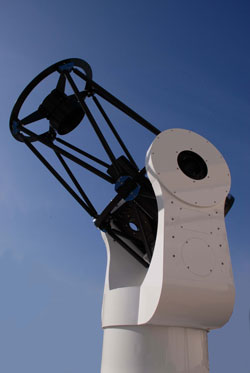 One of the individual telescopes of the Minerva project | |
| Alternative names | MINiature Exoplanet Radial Velocity Array |
|---|---|
| Location(s) | Mount Hopkins, Arizona |
| Coordinates | 31°41′18″N110°53′07″W / 31.6884°N 110.8854°W |
| Website | www |
| | |

The MINiature Exoplanet Radial Velocity Array (MINERVA) is a ground-based robotic dedicated exoplanet observatory. The facility is an array of small-aperture robotic telescopes outfitted for both photometry and high-resolution Doppler spectroscopy located at the U.S. Fred Lawrence Whipple Observatory at Mt. Hopkins, Arizona. [1] [2] [3] [4] The project's principal investigator is the American astronomer Jason Eastman. [1] The telescopes were manufactured by PlaneWave Instruments.


